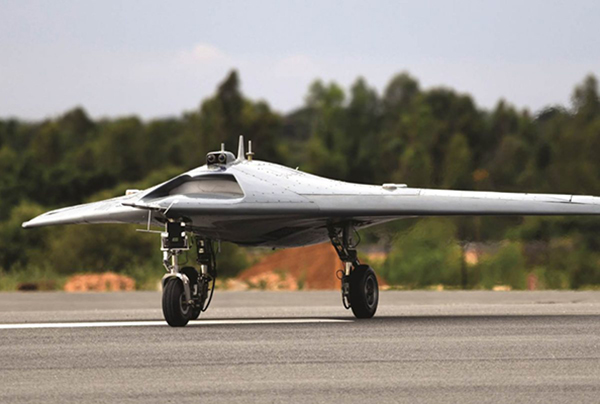India conducted the maiden flight test of the Autonomous Flying Wing Technology Demonstrator, on 1 July, said to be the precursor to the future combat drones. What does the test mean for the development of stealth unmanned combat air vehicles for the armed forces.
The Test
The demonstrator vehicle was tested at the Aeronautical Test Range located at Chitradurga in Karnataka on Friday. While being operated in a completely autonomous mode, it exhibited a perfect flight, according to the Defence Research and Development Organisation (DRDO). The take-off of the vehicle, the automatic navigation tracing the designated points — waypoint navigation and a touchdown — were all executed with the desired precision.
“This flight marks a major milestone in terms of proving critical technologies towards the development of future unmanned aircraft and is a significant step towards self-reliance in such strategic defence technologies,” the Ministry of Defence said.
The demonstrator has been developed by the Aeronautical Development Establishment (ADE), a Bengaluru-based facility of the DRDO working in the fields of unmanned aerial vehicles, flight simulators, pilotless target aircraft, plight control systems and air weapons. Congratulating the DRDO, Defence Minister Rajnath Singh Rajnath Singh said that it is a major achievement towards autonomous aircraft and will pave the way for ‘Aatmanirbhar Bharat’ in terms of critical military systems.
What is special about it?
DRDO officials highlighted the flying wing structure of the technology demonstrator, which refers to a tailless fixed-wing aircraft which houses its payload and fuel in its main wings and does not have a defined fuselage-like structure found in the conventional aircraft. The design, DRDO scientists say, has the potential to deliver high fuel efficiency and stealth, if executed with precision, as demonstrated by some of advanced bombers in the USA’s arsenal like B-2 bomber.
The officials added that the flying wing type of aircraft has a key operational advantage because it has low reflective cross sections resulting in low radar signature, making it a stealth machine. Because of the shape, the aircraft also has very low drag or air resistance. However, this unique design also comes with its issues related to stability and thus requires additional systems.
The airframe — the basic mechanical structure of the aircraft, the undercarriage — the landing gear used for take-off and landing and the entire flight control along with avionics systems used for the demonstrator have been developed indigenously. The vehicle is powered by a small turbofan engine which is an airbreathing type jet engine.
How will it help develop future combat drones?
DRDO scientists said that this technology demonstrator will further undergo tests for examining other technologies in the development of future combat drones. Tests would also be conducted on the scale and capability of the vehicle. Sources said that the Autonomous Flying Wing Technology Demonstrator is precursor to an autonomous stealth Unmanned Combat Air Vehicle (UCAV) being developed by the DRDO, primarily for the Indian Air Force. A deck launched version for the Indian Navy is also said to be in the pipeline. The UCAV will be capable of launching missiles and precision-guided munitions.
The DRDO has in the past developed various drones, like Nishant, Rustom, Tapas and Lakshya among others, which have different capabilities and operational roles. In July last year, the DRDO also unveiled its anti-drone technology aimed at neutralising enemy attacks. The system has the capability of counter attacks, including detection, soft kill — for jamming the communication links of drone) and hard kill — and laser based hard kill to destroy the drone to neutralise the adversary drones.
Several scenarios in the recent past, both in India and abroad, have highlighted the strategic importance of having stealth combat drones in the arsenal. While the Indian armed forces currently operate a mix of indigenously developed and imported drones, a fully homegrown stealth combat machine is the need of the hour, experts said.
While some reports suggest that the UCAV will be titled Ghatak (deadly) or Autonomous Unmanned Research Aircraft, the agency has not officially released the details.

















